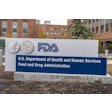Researchers have discovered that women, female monkeys, and female mice have major similarities when it comes to how bisphenol A (BPA) is metabolized, and they have renewed their call for governmental regulation when it comes to the estrogenlike chemical found in many everyday products (Environmental Health Perspectives, September 20, 2010).
The study, conducted by researchers from the University of Missouri; the University of California, Davis; and Washington State University, ties rodent data on the health effects of BPA to predictions of human health effects from BPA with the use of everyday household products.
"This study provides convincing evidence that BPA is dangerous to our health at current levels of human exposure," said Fredrick vom Saal, Ph.D., Curators professor of biological sciences at the University of Missouri, in a news release. "The new results clearly demonstrate that rodent data on the health effects of BPA are relevant to predictions regarding the health effects of human exposure to BPA. Further evidence of human harm should not be required for regulatory action to reduce human exposure to BPA."
The findings in the current study suggest that human exposure to BPA -- which is found in numerous consumer products and some dental sealants -- is much higher than some prior estimates and is likely to be from many still-unknown sources, indicating the need for governmental agencies to require the chemical industry to identify all products that contain BPA.
"For years, BPA manufacturers have argued that BPA is safe and have denied the validity of more than 200 studies that showed adverse health effects in animals due to exposure to very low doses of BPA," said Julia Taylor, Ph.D., lead author and associate research professor at the University of Missouri. "We know that BPA leaches out of products that contain it, and that it acts like estrogen in the body."
Several states, including Connecticut, Massachusetts, Washington, New York and Oregon, have passed bills to reduce exposure to BPA, and similar legislation is pending in the U.S. Congress.
"We've assumed we're getting BPA from the ingestion of contaminated food and beverages," said co-author Pat Hunt, Ph.D., a professor in the Washington State University School of Molecular Biosciences. "This indicates there must be a lot of other ways in which we're exposed to this chemical and we're probably exposed to much higher levels than we have assumed."
Copyright © 2010 DrBicuspid.com



















